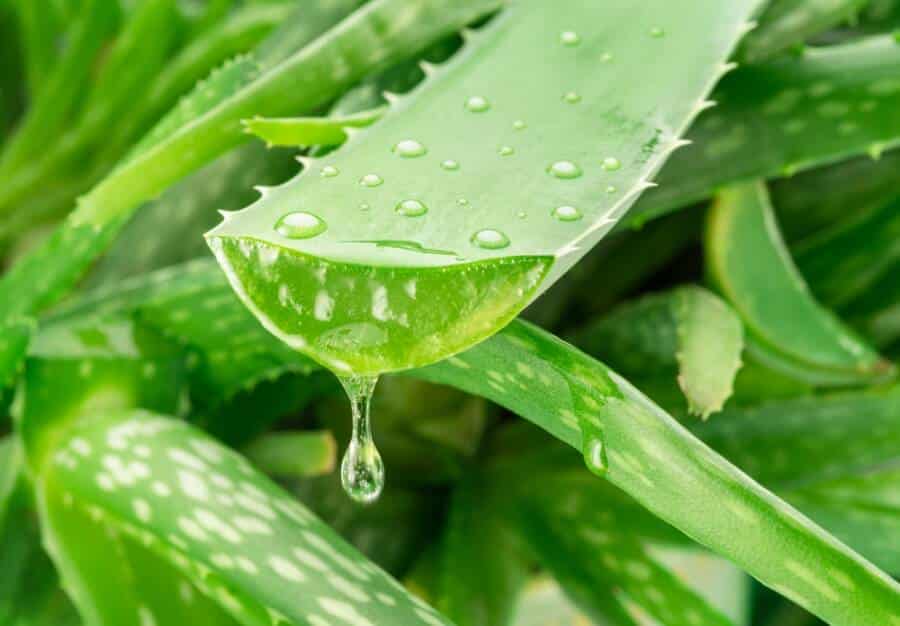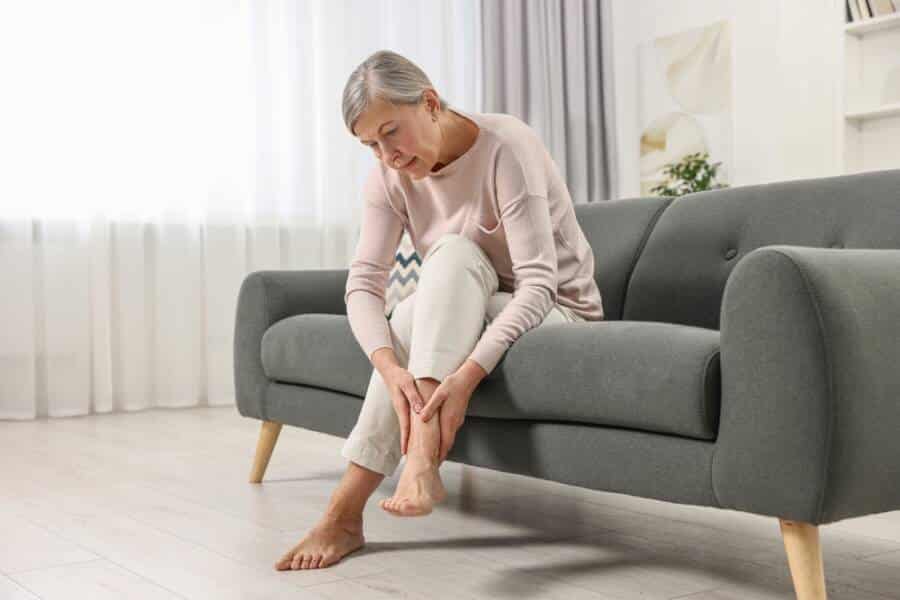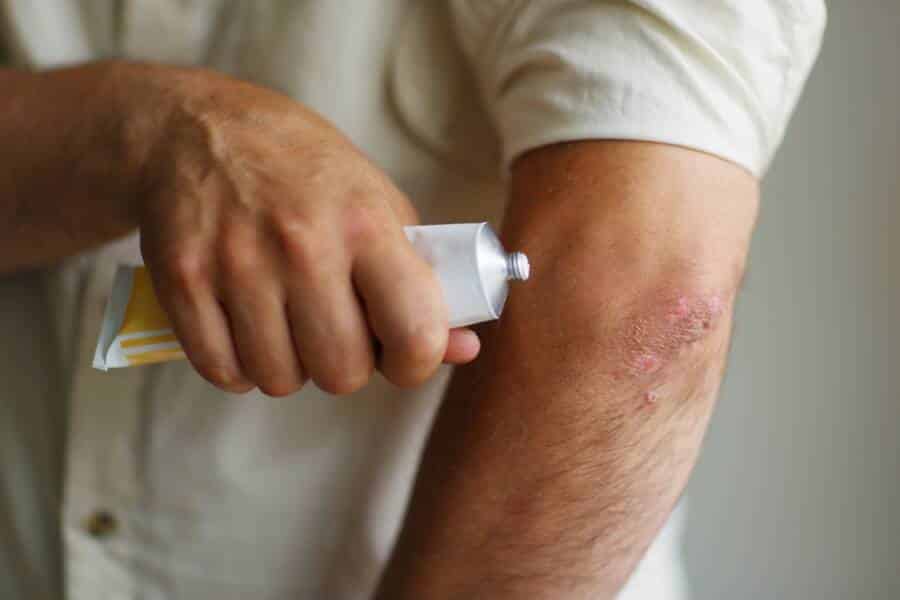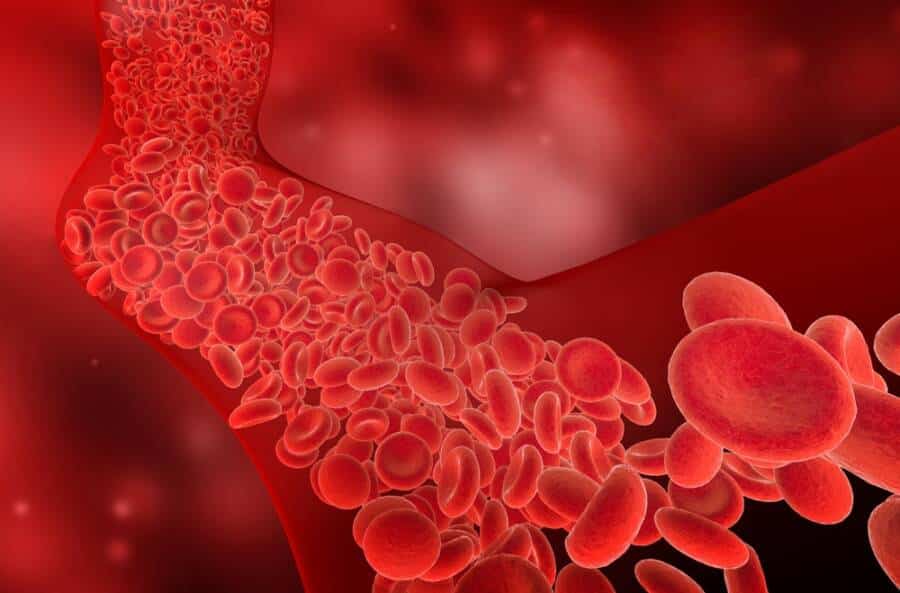Aloe vera has been valued for centuries, and it’s now more popular than ever. It’s grown worldwide, and it’s mostly harvested for aloe gel, coming from its leaves. Today, we can see it used in foods, cosmetics, supplements, and herbal remedies. It’s mostly praised for its cooling force field as it instantly relieves and speeds up the healing process in case of sunburns.
With this amazing use and a history stretching back to ancient Egypt, there is no wonder it was being called “the plant of immortality” back then. It has been used for centuries in India, Greece, China, Mexico, Egypt, and beyond.
Aloe seems to be nature’s moisture magnet and it can hold up to 1000 times its weight in water, so it’s an incredible natural moisturizer for skin and hair. This hydration powerhouse will be your ally in your battle with dry skin, reviving it.
Why not make it a part of your nighttime routine? It’s loaded with so many antioxidants such as vitamins C and E, repairing your skin while you sleep. Don’t hesitate to wake up glowing with rejuvenated skin and learn how to incorporate it into your beauty regimen.
This plant has skin healing, hair reviving, and body soothing properties and it has been trusted for centuries. It’s proven to stimulate hair follicles and help promote growth, so massaging Aloe into your scalp can nourish your hair from root to tip, and also reduce dandruff. With its antioxidant properties, you can even use it as a mouthwash, as a gentle but effective way to maintain high oral hygiene.

Table of Contents
ToggleLet’s see how we can use it the best and how it’s proven to be a huge help in multiple ways.
How to use Aloe Vera?
- You can apply the gel directly to the skin or hair. Exercisers consider it safe to even use it as a mouthwash, topically. You can purchase the ready-made gel from pharmacies and health stores, or you can directly cut the leaf from the plant and use the gel inside.
- If you use it for the first time, start with a small amount and gradually increase it, depending on your needs and purposes.
- For your skin, you can apply it directly or create a DIY lotion using the gel as the main ingredient. First, test it on a small patch of skin and check for any adverse reactions.
- For the face, use it in small amounts because the face is more sensitive than the rest of the body. You can follow the same steps.
- If you want to use it for your hair, it can work as a moisturizer both for the hair and scalp. You can rub the gel into your hair and scalp or use hair products containing Aloe Vera.
Safety
When it comes to safety, it’s generally the safest to use it topically. Taking it orally can lead to cramps and diarrhea, or it can decrease the absorption of medications. Especially if you have diabetes, consult your doctor before using Aloe Vera orally.
These are the backed benefits of aloe vera:
Healthy teeth and gums
Aloe Vera gel can work in fighting cavities just as effectively as toothpaste. Aloe’s natural anti-inflammatory compounds, such as anthraquinones, can help reduce pain and kill harmful bacteria causing cavities.
Constipation relief?
Aloe vera is approved in Germany for treating constipation. Taken in doses of 50–200 mg, aloe latex in capsules or liquid form is used to ease digestion. However, the FDA hasn’t approved it in the US for this purpose, considering they don’t have enough data.
Diabetic Foot Ulcer Healing
Research from India shows that aloe vera can heal ulcers in people with diabetes. This gel can speed up the healing process and even outperforms commercial products when treating diabetic foot ulcers.
Aloe vera is truly a wonder plant, and it has multiple benefits, from dental health to skin healing.
Antioxidant and antimicrobial
With these properties of being antioxidant and antimicrobial, aloe vera can be extremely helpful for treating skin issues and small cuts.
Spain’s University of Las Palmas de Gran Canaria developed a study that showed how Aloe vera’s leaf skins, as well as the flowers, have great antioxidant effects. Interestingly, the leaf skin extract has antimycoplasmic activity, so it can fight certain bacteria that can be resistant to common antibiotics. This means aloe could be a great natural source of antimicrobial agents and antioxidants.

Sun protection
Aloe vera can act as a shield against sun damage. Studies from South Korea found that extracts from baby Aloe—just 1 month old—offered better protection against UVB (induced skin aging) compared to older Aloe shoots. This being said, we may have another powerful ally in our UVB fight and maintaining the youthful aspect of our skin.
Skincare during radiation therapy
In Naples, Italy, a study took place related to Aloe vera that was tested in cream used by breast cancer patients under radiation therapy. 100 patients were split into 2 groups and each used a different topical cream, one of them containing aloe. The creams have been applied twice a day, starting 15 days before the treatment and 1 month after.
The study showed that all the creams reduced skin damage from radiation; the Aloe Vera one did not stand out from the rest, but it has proven to be soothing and protecting for the skin during such treatments.
Mood, Memory, and Learning
Nutritional Neuroscience published a study finding that Aloe vera could reduce depression and improve memory in mice. The researchers concluded that aloe can enhance learning abilities and alleviate depressive symptoms. This is exciting news, but more research is needed to see if humans would benefit in the same fields as well.
However, it’s an important hint that aloe has the potential to be mood-boosting and a brain-enhancing supplement.
Healing burns
One of the most known properties of Aloe vera is the fact that it can be a go-to for treating second-degree burns, as a team of plastic surgeons compared it with 1% silver sulfadiazine (SSD), a standard burn treatment. Actually, patients treated with Aloe vera healed much faster and experienced earlier pain relief compared to those using the SSD cream, according to a study published in the Journal of Pakistan Medical Association. The scientists noted that aloe helped with pain management, and quick skin regeneration, and was more cost-effective.
If you’re unsure which one is the best on the market, you can order this one via Amazon: ALOE SECRETS – Aloe Vera Gel from freshly cut 100%, Pure Aloe Vera Gel
Keep on reading to see the full potential!

Aloe Vera has even more potential
Some research has shown Aloe vera can speed up the healing of canker sores and can reduce pain. Even if it wasn’t as effective as corticosteroids which is the standard treatment, participants found Aloe vera incredibly beneficial.
When it comes to wounds and burns, we already presented the studies that suggest it can be a real help with conditions such as skin ulcers, and burns, but also psoriasis.
Aloe vera can be used as a mouthwash and it can be just as effective in reducing plaque as the well-known versions of mouthwash.
In 2013 found that a mix of Aloe vera and tretinoin, a common acne treatment can help with inflammation and lesions over 8 weeks.
A 2016 review considered that it can also help with blood sugar control, for people with type 2 diabetes. However, more studies are needed to confirm these findings.
While there is not enough evidence, Aloe Vera can also help with irritable bowel syndrome and it’s believed to inhibit the growth of Helicobacter pylori, bacteria responsible for stomach ulcers.
This ancient plant has incredible properties, but it’s important to use it carefully and consult a doctor before using it for medical purposes.
If you liked our article, you can read this one next: Fall Immunity Boost: 9 Habits You Should Follow





